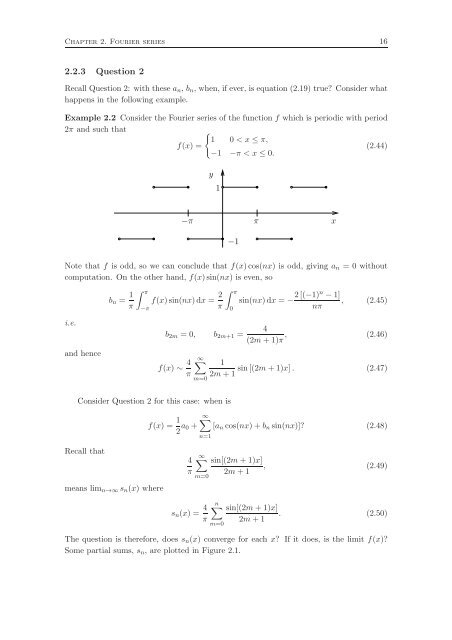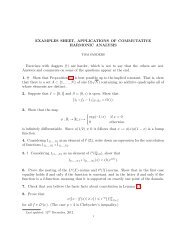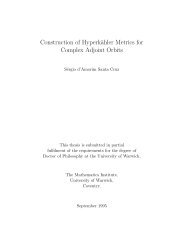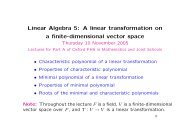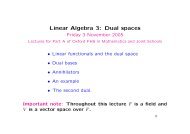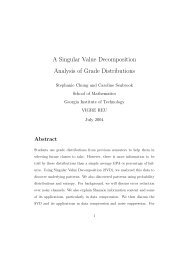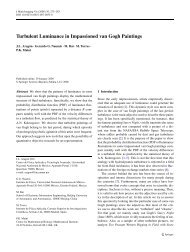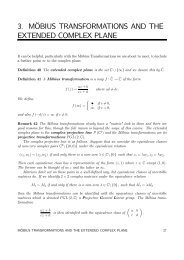Fourier Series and Partial Differential Equations Lecture Notes
Fourier Series and Partial Differential Equations Lecture Notes
Fourier Series and Partial Differential Equations Lecture Notes
Create successful ePaper yourself
Turn your PDF publications into a flip-book with our unique Google optimized e-Paper software.
Chapter 2. <strong>Fourier</strong> series 16<br />
2.2.3 Question 2<br />
Recall Question 2: with these an, bn, when, if ever, is equation (2.19) true? Consider what<br />
happens in the following example.<br />
Example 2.2 Consider the <strong>Fourier</strong> series of the function f which is periodic with period<br />
2π <strong>and</strong> such that <br />
1 0 < x ≤ π,<br />
f(x) =<br />
−1 −π < x ≤ 0.<br />
(2.44)<br />
−π<br />
y<br />
1<br />
Note that f is odd, so we can conclude that f(x)cos(nx) is odd, giving an = 0 without<br />
computation. On the other h<strong>and</strong>, f(x)sin(nx) is even, so<br />
i.e.<br />
<strong>and</strong> hence<br />
−1<br />
bn = 1<br />
π<br />
f(x)sin(nx)dx =<br />
π −π<br />
2<br />
π<br />
π 0<br />
b2m = 0, b2m+1 =<br />
f(x) ∼ 4<br />
π<br />
∞<br />
m=0<br />
Consider Question 2 for this case: when is<br />
Recall that<br />
means limn→∞sn(x) where<br />
f(x) = 1<br />
2 a0 +<br />
4<br />
π<br />
π<br />
sin(nx)dx = − 2[(−1)n −1]<br />
, (2.45)<br />
nπ<br />
4<br />
, (2.46)<br />
(2m+1)π<br />
1<br />
sin[(2m+1)x]. (2.47)<br />
2m+1<br />
∞<br />
[ancos(nx)+bnsin(nx)]? (2.48)<br />
n=1<br />
∞<br />
m=0<br />
sn(x) = 4<br />
π<br />
sin[(2m+1)x]<br />
, (2.49)<br />
2m+1<br />
n<br />
m=0<br />
sin[(2m+1)x]<br />
. (2.50)<br />
2m+1<br />
The question is therefore, does sn(x) converge for each x? If it does, is the limit f(x)?<br />
Some partial sums, sn, are plotted in Figure 2.1.<br />
x


